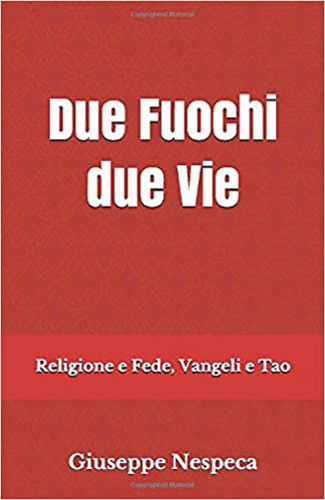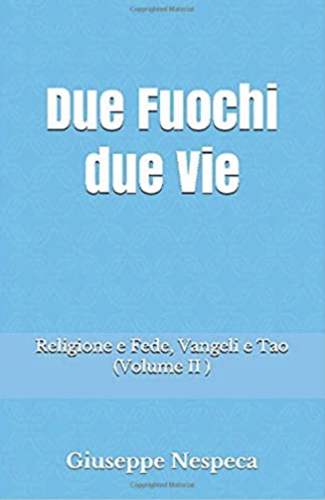First Sunday of Advent (year A) [30 November 2025]
May God bless us and may the Virgin Mary protect us! Advent marks the beginning of a new liturgical year (Year A), accompanied by the evangelist Matthew, who invites us to become collaborators in the plan of salvation that God has ordained for the Church and the world. A small change: from now on, I will also offer a summary of the main elements of each text.
First Reading from the Book of the Prophet Isaiah (2:1-5)
We know that biblical authors love images! Here are two beautiful ones in Isaiah's preaching: first, that of a huge crowd on the move, then that of all the armies of the world deciding to turn their weapons into agricultural tools. Let us look at these images one after the other. The crowd on the move climbs a mountain: at the end of the journey is Jerusalem and the Temple. Isaiah, on the other hand, is already in Jerusalem and sees this crowd arriving, a veritable human tide. It is, of course, an image, an anticipation, probably inspired by the great pilgrimages of the Israelites to Jerusalem during the Feast of Tabernacles (Sukkot). On this occasion, for eight days, people live in huts, even in the city, remembering their stay in the desert during the Exodus. All the Jewish communities flock there, and Deuteronomy invites them to participate with joy, even with their children, servants, foreigners, orphans, and widows (Dt 16:14-15). The prophet Isaiah, observing this extraordinary annual gathering, foresaw a future one and, inspired by the Holy Spirit, announced that one day not only Israel but all nations would participate in this pilgrimage and the Temple would become the gathering place for all peoples, because the whole of humanity would know the love of God. The text intertwines Israel and the nations: "The mountain of the Lord's temple will be raised above the hills... and all nations will flock to it." This influx symbolises the entry of other nations into the Covenant. The law will come forth from Zion and the word of the Lord from Jerusalem: Israel is chosen by God, but it also has a responsibility to collaborate in the inclusion of the nations in the divine plan. Thus, the Covenant has a dual dimension: particular (Israel chosen) and universal (all nations). The entry of the nations into the Temple does not concern sacrifice, but listening to the Word of God and living according to His Law: "Come, let us go up to the mountain of the Lord ... that He may teach us His ways and we may walk in His paths." The second image shows the fruit of this obedience: the nations will live in peace, God will be judge and arbiter, and weapons will be transformed into tools of labour: They will forge their swords into ploughshares and their spears into pruning hooks. They will no longer raise the sword against a people. Finally, Isaiah invites Israel to walk in the light of the Lord, to fulfil its vocation and to lead everyone towards the Light: going up to the Temple means celebrating the Covenant, walking in the light means living according to the Law.
In summary, here are all the main elements of the text:
+Two symbolic images from Isaiah: the crowd on pilgrimage and the transformation of weapons into instruments of peace.
+Jerusalem and the Temple: destination of the pilgrimage, symbol of God's presence and centre of the Covenant.
+Feast of Tabernacles (Sukkot): historical reference to the annual pilgrimage of the Israelites.
+Universality of salvation: Israel, the chosen people, guides all nations, which will be included in the Covenant.
+Dimension of the Covenant: particular (Israel) and universal (all nations).
+Listening to the Word and living according to the Law: participation is not only ritual, but a concrete commitment to life.
+Peace and transformation of weapons: symbol of the realisation of God's plan of justice and harmony.
+Final invitation: Israel must walk in the light of the Lord and lead humanity to God.
+Prophecy as promise, not prediction: prophets speak of God's will, not of the future in a divinatory sense.
Responsorial Psalm (121/122, 1-9)
Here we have the best possible translation of the Hebrew word "Shalom": "Peace to those who love you! May peace reign within your walls, happiness in your palaces...". When you greet someone with this term, you wish them all this. Here this wish is addressed to Jerusalem: 'Pray for the peace of Jerusalem... For my brothers and my friends, I will say: Peace be upon you! For the house of the Lord our God, I will pray for your good'. The very name Jerusalem contains the word shalom; it is, should be, and will be the city of peace. However, this wish for peace and happiness is still far from being realised. The history of Jerusalem is turbulent: around 1000 BC, it was a small village called Jebus, inhabited by the Jebusites. David chose this place as the capital of his kingdom: initially, the capital was Hebron, and David was king only of the tribe of Judah; then, with the accession of the other tribes, Jebus was chosen, which became Jerusalem, 'the city of David'. Here David transferred the Ark of the Covenant and purchased Araunah's field for the Temple, following God's will. The definition of Jerusalem as a 'holy city' means that it belongs to God: it is the place where one must live according to God. With David and Solomon, the city reached its cultural and spiritual splendour and became the centre of religious life with the Temple, a destination for pilgrimages three times a year, particularly for the Feast of Tabernacles. The prophet Nathan reminds David that God is more interested in the people than in the Temple: "You want to build a house for God, but it is God who will build a house for you (descendants)". Thus God promises to preserve David's descendants forever, from whom the Messiah will come. In the end, it was Solomon who built the Temple, making Jerusalem the centre of worship. The city then underwent destruction and reconstruction: the conquest by Nebuchadnezzar in 587 BC, the Exile to Babylon, the return authorised by Cyrus in 538 BC and the reconstruction of Solomon's Temple. Even after the persecutions of Antiochus Epiphanes and the destruction of the Temple in 70 CE, Jerusalem remained the holy city, symbol of God's presence, and the hope of its full restoration remained alive. Believers, wherever they were, continued to turn to Jerusalem in their daily prayers, remembering God's faithfulness to the promises made to David. Psalm 121/122, a pilgrimage song, celebrated this centrality of Jerusalem, inviting the faithful to ascend to the house of the Lord and walk in God's light.
Summary of main points
+Shalom and Jerusalem: Shalom means peace and happiness; Jerusalem is the city of peace.
+History of the city: from Jebus to David's capital, transfer of the Ark, construction of the Temple.
+Holy city: belongs to God; living in Jerusalem means living according to God.
+Nathan and the descendants of David: God more interested in the people than in the Temple; promise of the Messiah.
+Pilgrimages and religious life: Jerusalem as a centre of worship with pilgrimages three times a year.
+Destruction and reconstruction: Nebuchadnezzar, Exile, Cyrus, persecutions by Antiochus, destruction of the Temple in 70 AD.
+Hope and faith: Jerusalem remains a symbol of God's faithfulness; the faithful pray facing towards it.
+Psalm 121/122: a song of pilgrimage, inviting us to ascend to the house of the Lord and walk in divine light.
Second Reading from the Letter of Saint Paul the Apostle to the Romans (13:11-14)
In this text, Saint Paul develops the classic contrast between 'light and darkness'. 'Our salvation is nearer now than when we first believed'. This sentence remains true! One of the articles of the Catholic faith is that history is not a continuous repetition, but on the contrary, God's plan advances inexorably. Every day we can say that God's providential plan is further ahead than yesterday: it is being fulfilled, it is progressing... slowly but surely. To forget to proclaim this is to forget an essential point of the Christian faith. Christians have no right to be sad, because every day 'salvation is nearer', as Paul says. This providential and merciful plan of God needs us: this is no time to sleep. Those who know God's plan cannot risk delaying it. As the Second Letter of Peter says: "The Lord is not slow in keeping his promise... but is patient with you, not wanting anyone to perish, but everyone to come to repentance" (2 Pet 3:9). Our inactivity, our "sleep" has consequences for the fulfilment of God's plan; leaving our abilities dormant means compromising it or at least delaying it. That is why sins of omission are serious. Paul says, 'The night is far gone, the day is at hand'; and elsewhere he speaks of a short time, using a nautical term: the ship has set sail and is approaching the port (1 Cor 7:26, 29). It may seem presumptuous to think that our conduct affects God's plan, but this is precisely the value and seriousness of our life. Paul reminds us: 'Let us behave honourably, as in the daytime, not in orgies and drunkenness, not in sexual immorality and debauchery, not in quarrelling and jealousy'. There are behaviours of light and darkness when the baptised person does not live according to the Gospel. Paul does not only tell us to choose the works of light, but to reject those of darkness, always fighting for the light. This means two things: every day we must choose the light, a real struggle, especially in the face of anthropological and social challenges, forgiveness, and the rejection of compromises and privileges (cf. Phil 2:12). Elsewhere, St Paul also speaks of the armour of righteousness, the breastplate of faith and love, and the helmet of the hope of salvation (cf. 2 Cor 6:7; 1 Thess 5:8). Here, the garment of light is Jesus Christ himself, whose light envelops us like a cloak. In baptism, immersion symbolises death to sin and being clothed in Christ (Gal 3:27). The Christian struggle is not ours alone, but it is Christ who fights in us and promises us that when we are persecuted, we must not prepare ourselves because it is he who speaks to us and gives us wisdom that no one can oppose.
Summary of the main points
+Salvation is ever closer: history is not a cycle, but a progression of God's plan.
+Believers cannot be passive: our inactivity delays the fulfilment of God's plan, and sins of omission are serious because we must carry out God's plan every day.
+There are activities of light and darkness: Christian and non-Christian behaviours that do not always coincide with faith or baptism.
+The Christian struggle is daily: choosing light, forgiveness, rejecting compromise and immorality.
+The image of the robe of light represents Jesus Christ who envelops us and guides our lives. Baptism symbolises being clothed in Christ and the beginning of the struggle of light.
+The Christian's strength is not only his own: Christ fights in us, guaranteeing wisdom and words against persecution.
From the Gospel according to Matthew (24:37-44)
One thing is certain: this text was not written to frighten us, but to enlighten us. Texts like this are called apocalyptic, which literally means 'lifting a corner of the veil': they reveal reality. And the reality, the only one that matters, is the coming of Christ. Notice the language: coming, advent, always referring to Jesus: Jesus spoke to his disciples about his coming, which will be like in the days of Noah. You also do not know the day when the Lord will come, because it will be at the hour when you do not expect it. The heart of the message is therefore the announcement that Jesus Christ will come. Curiously, Jesus speaks in the future tense: 'Your Lord will come'. It would be more logical to speak in the past tense because Jesus had already come... This shows us that the 'coming' is not the birth, but something that concerns the fulfilment of God's plan. Very often we are disturbed by images of judgement, such as the comparison with the flood: "Two men will be in the field, one will be taken away and the other left." This is not divine arbitrariness, but an invitation to trust: just as Noah was found righteous and saved, so everything that is righteous will be saved. Judgement distinguishes the good from the bad, the wheat from the chaff, and this takes place in the heart of each person. Jesus uses the title Son of Man to speak of himself, but not only of himself as an individual: he takes up the vision of the prophet Daniel, in which the 'Son of Man' also represents the people of the saints, a collective being. Thus, the coming of Christ concerns the whole of humanity. As St Paul says, Christ is the head and we are the members; St Augustine speaks of the total Christ: head in heaven, members on earth. When we say in prayer that we await the good that God promises us, that is, the coming of Jesus Christ, we are referring to the total Christ: the man Jesus has already come, but the total Christ is in continuous growth and fulfilment. St Paul and, more recently, Teilhard de Chardin emphasise that the whole of creation groans in expectation of the fulfilment of Christ, which is progressively completed in history and in each one of us. When Jesus invites us to watch, it is an invitation to safeguard God's great plan, dedicating our lives to advancing it. Finally, this discourse takes place shortly before the Passion: Jesus warns of the destruction of the Temple, the symbol of his presence and of the Covenant, but does not answer specific questions about the end of the world; instead, he invites vigilance, reassuring his disciples in the face of trials.
Summary of the main points
+Purpose of the text: not to frighten, but to enlighten; to reveal the reality of Christ's coming.
+Christ's coming: Jesus speaks in the future tense because the complete coming concerns Christ as a whole, not just the historical birth of Jesus.
+Judgement and justice: distinguishing good from evil takes place in the heart of each person; the righteous will be saved.
+Title Son of Man: refers not only to Jesus, but to the people of the saints, that is, saved humanity. Christ in his entirety: Christ as the head and believers as members; fulfilment is progressive throughout history.
+Watchfulness and vigilance: the disciples are called to guard God's plan and dedicate their lives to its fulfilment.
+Temple and passion: the discourse precedes the Passion, announces the destruction of the Temple and invites the disciples to trust despite the trials they will have to endure.












